Interview – Eleonora Agostini
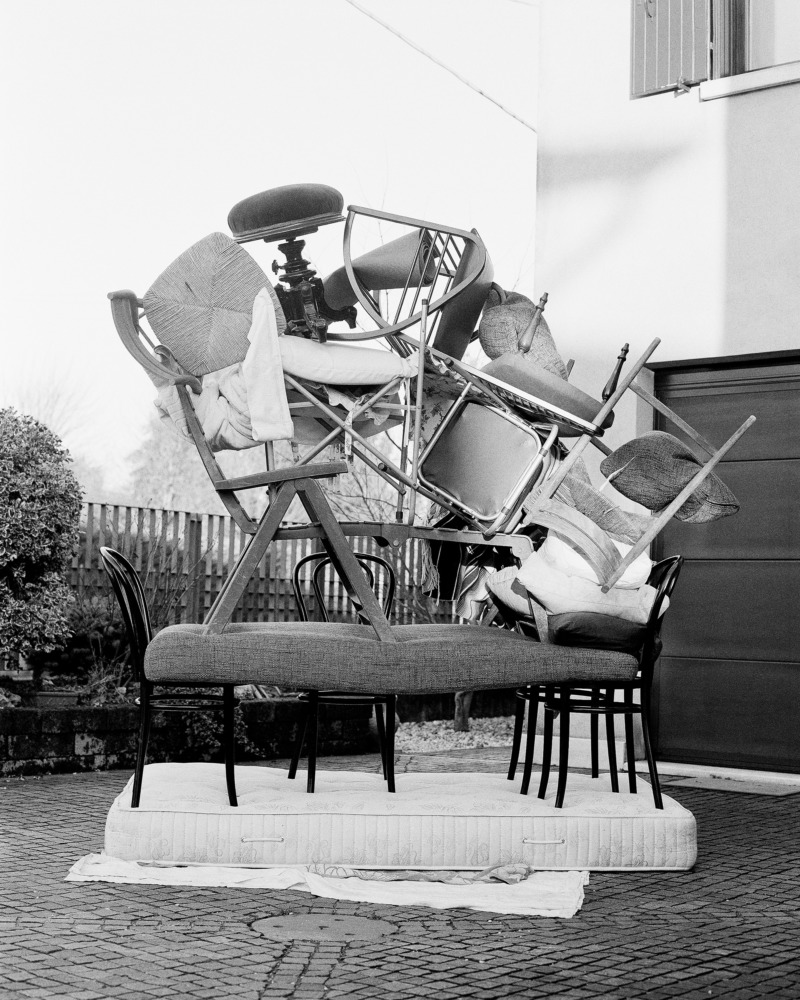
In her 1997 book Family Frames: Photography, Narrative and Postmemory, Marianne Hirsch describes how, right after its invention, photography quickly became the family’s primary instrument of self-knowledge and representation, “the means by which family memory would be continued and perpetuated, by which the family’s story would henceforth be told.” Seen under this light, the apparently harmless and banal family picture is, in fact, a very powerful form of visual record.
Italian photographer Eleonora Agostini, born 1991, seems to be aware of the deceptive nature of family photographs and acquainted with the fact that they shape us as much as we frame them. Through her project A Blurry Aftertaste (Paper Journal, 2019), Agostini explores this territory in search of an alternative look to a genre that is one of the most insidious to handle, being simultaneously emotionally charged and culturally constructed. She does so with determination and grace, in a cleverly playful mix of performance, installation, sculpture and photography that is ultimately a reflection on the photographic medium as such.
A Blurry Aftertaste was selected for the Paper Journal Annual 2019, launching at Offprint, London on 18 May 2019.
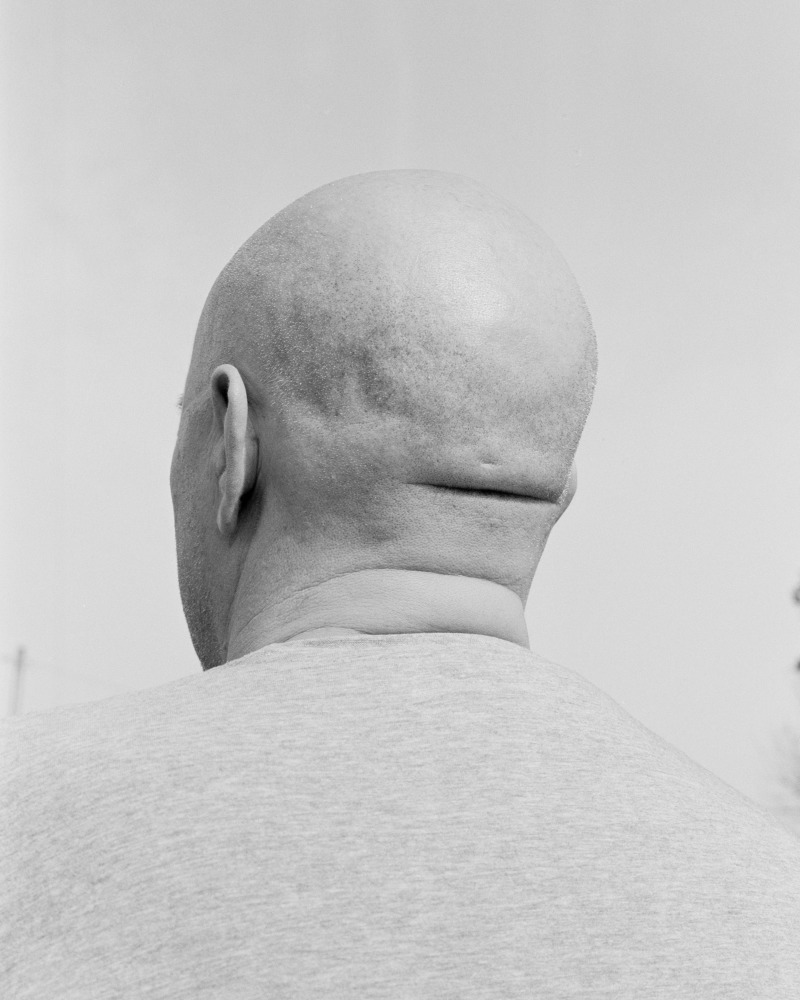
Your photography has a strong performative aspect, and I imagine that you spend more time in front of the camera arranging your compositions with people and objects than behind it. I wanted to know first of all whether this is correct, and if so, where does this process originate?
Yes, it’s partly correct. The installations that you see are the result of a set of instructions that I had previously formulated. When I started the project, I had a list of ideas in a notebook of how I could transform the domestic space into a place for experimentation. The majority of these ideas depict strange activities performed by my parents in front of the camera.
For example, for the image titled Relaxation Island I moved intimate objects such as pillows, mattresses, cushions and similar from inside my parents’ house out to their garden, and when they came back from work I asked them to perform the laborious task of composing the objects together in the totem which I then photographed. My instructions were not particularly detailed, so an element of serendipity came into play as they freely interpreted them.
In a way, you activated a subversion of the family hierarchy: you, as the child, took over your parents’ leading role.
After I moved out of my parents’ home, I started being really interested in understanding these power relationships and how the roles within a family can be reconsidered. Through the collaboration between my family members, I wanted to explore issues such as labour, comfort, and tensions within the borders of the home. There are a lot of contrasting feelings within the work: control and surrender, ease and distress…
I’m curious to hear how your family members reacted to your idea. Did they go through a process themselves, where they began one way and ended up another?
It was actually quite funny. When I showed my parents my notebook with this list of ideas, they had two different reactions. My mum was really collaborative, she didn’t ask many questions and just wanted to help me, because she knew it was important to me. Even though at that point I didn’t quite know what I was doing myself! My dad, on the other hand, was pretty sceptical.
I think the most difficult image was the first one we did together, Relaxation Island. My parents have two hours of free time during their day because they work a lot, so my dad was rather pissed off when he came home and couldn’t find anywhere to sit or lay down. My house is mainly used as a place to sleep, so it was disorientating for them to see all their furniture and belongings in the garden. At the same time, it was really interesting that once the process was at its end, both my parents were really proud of the strange installation they had made. I have a very funny video of them working on it.
Two other images are created with the same approach, that is, taking domestic tools out of their natural habitat and trap them in a limbo where they aren’t being used. One shows objects from the kitchen, and the other tools from the shed, which I photographed quite a lot for this project. Regarding the pictures where my parents are actually the protagonists, such as Wednesdays 4, I think they quite enjoyed doing that. As you said earlier, the role of the child and the parents are completely reversed. They’re playing in the garden and in a way, I’m a spectator to it; waiting for something to happen.
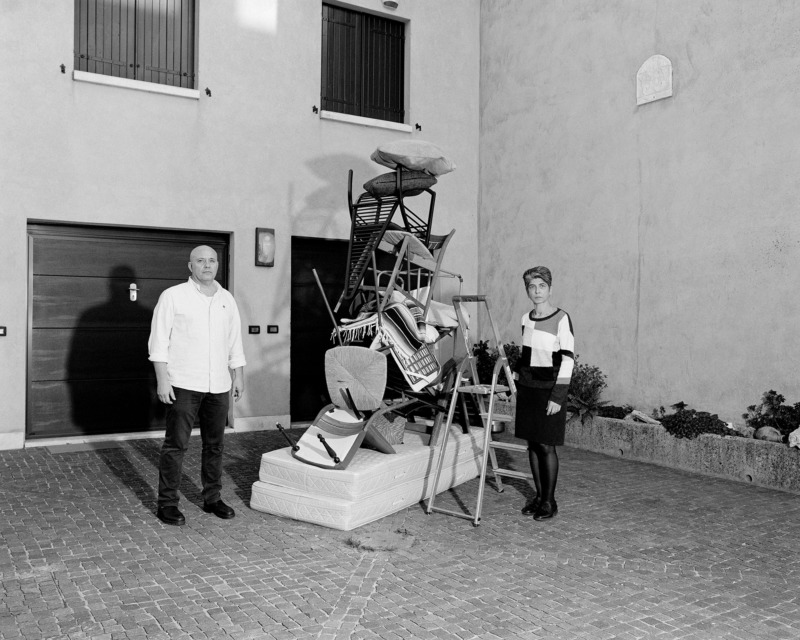
Some of your images remind me of Erwin Wurm’s One Minute Sculptures. First of all, because of their awkward compositions and surreal situations, which are also typical traits of his ‘sculptures’. I’m thinking for instance of the image where your mum is walking nonchalantly over your dad’s back: this evokes in me a reaction in between amusement and uneasiness. In Wurm’s case, he talks about an approach to formalism which is at the same time humorous but serious. Can the same apply to you?
Yes. I think that the work exists between this feeling of amusement and uneasiness. When you look at the images, the first reaction you have is laughter, yet at the same time you become aware of what it actually is; it then opens up other conversations. Like Wurm, I believe that certain problems can be touched and approached in different ways. As he has stated, “you don’t always have to be deadly serious. Sarcasm and humour can help you see things in a lighter vein.”
For me, I use humour and absurdity as vessels to investigate what we know as human beings and to question socially constructed rules by redefining them in my own way. My work, in general, takes the overlooked into consideration. This body of work really helped me to create a new narrative within my domestic experience through performance and sculpture.
Wurm questions the audience by asking what a sculpture is and what defines it. He plays with the relationship between objects and the body, questioning balance, gravity and volume. I believe certain themes he talks about are present in my work, especially in those images where the performative aspect is really visible. In A Blurry Aftertaste, I was really interested in questioning the medium of photography; what photography is, and how it’s associated with memory and documentary. Photography acts as a documentation of the performative and sculptural process that exists within the work, and represent the result that comes from it.
I think you have a special capacity to caption your pictures. The project’s title itself, A Blurry Aftertaste, is both charmingly evocative and slightly disquieting. It might feel so because it’s built on a synesthesia, mixing the sense of sight with that of taste. Could you unfold your thoughts behind it?
The works’ titles were very important to me because I wanted them to suggest the thin line that exists between all the contrasting feelings the project is built upon. A Blurry Aftertaste is very much related to memory and what’s left of it. The aftertaste is the memory itself, a memory of something you experience and which slowly disappears; it loses intensity over time. I was really interested in this and how that could be related to the memory of the first house we live in.
When I decided on the title, I was reading The Poetics of Space by Gaston Bachelard; he states that the way we live in the first house we inhabit or grow up in is reflected in all the houses we live in afterwards. I find this special relationship very intriguing. It might change with time, but it’s unconscious memory keeps on following us in our everyday life.
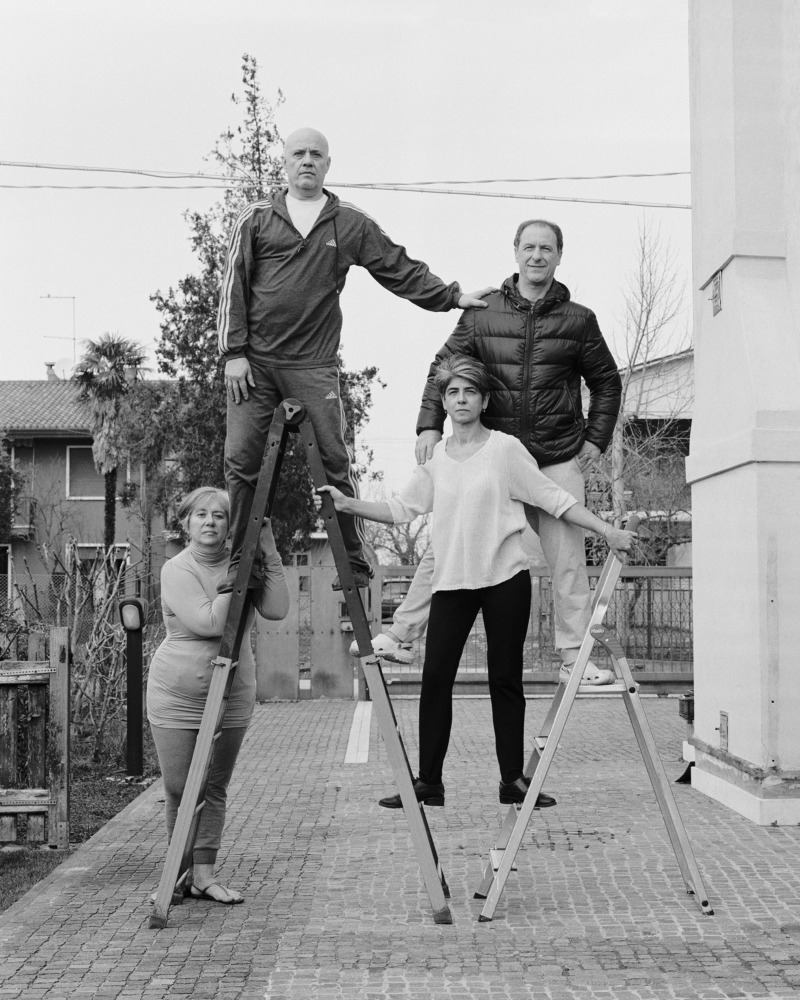
This makes me think of the family album, where the story is one, but each image relates to a specific time and space: here’s a trip to the seaside, here’s a birthday party… Bits and pieces that are part of a larger narrative.
A Blurry Aftertaste is very much related to the family album, because it can be seen as a special kind of documentation. Exactly like when I went on holiday with my parents as a child, and they took a picture of that moment. Even if the purpose of these images is quite different, I like to think that they are also documents of the moments I shared with my parents in a particular place, the home I grew up in, and a certain moment in our lives.
It’s particularly interesting to do such a thing now, as we are the last ones who will have a family album at home. We are the last generation whose parents would print photos… I’d like to end with a question about your choice of black and white. As I read it, it’s an element that transforms people and things into proper sculptures. Is this choice somehow linked to the connotative urban aesthetic that is very strong in provincial Italy – that big names such as Luigi Ghirri have depicted – and also permeates your project?
In fact, the work includes more images than the ones you see in my book, some of which are in colour. But the majority of them is black and white. Behind this choice there was my wish to keep a distance from what I was photographing, but also from the stereotype of the Italian suburban colour images that are quite dreamy and romantic. I think it’s a matter of light and atmosphere: it was important for me not to reveal too much. I wanted to use black and white to make the work more ubiquitous and universal. At the same time, my work is related to the notion of control, and monochromatic images give a sense of silence and stillness that well apply to this idea.
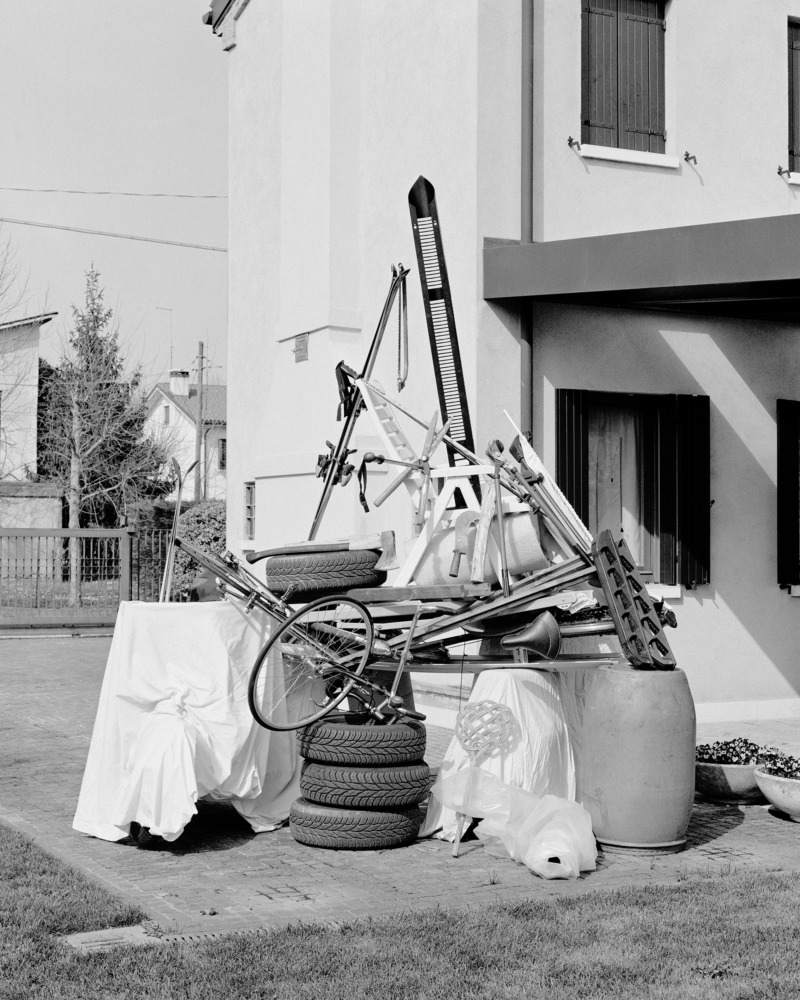
A Blurry Aftertaste, Eleonora Agostini (Paper Journal, 2019) book launch and signing takes place at Offprint, Tate Modern, London, Saturday 18 May 2019 at 5pm.
